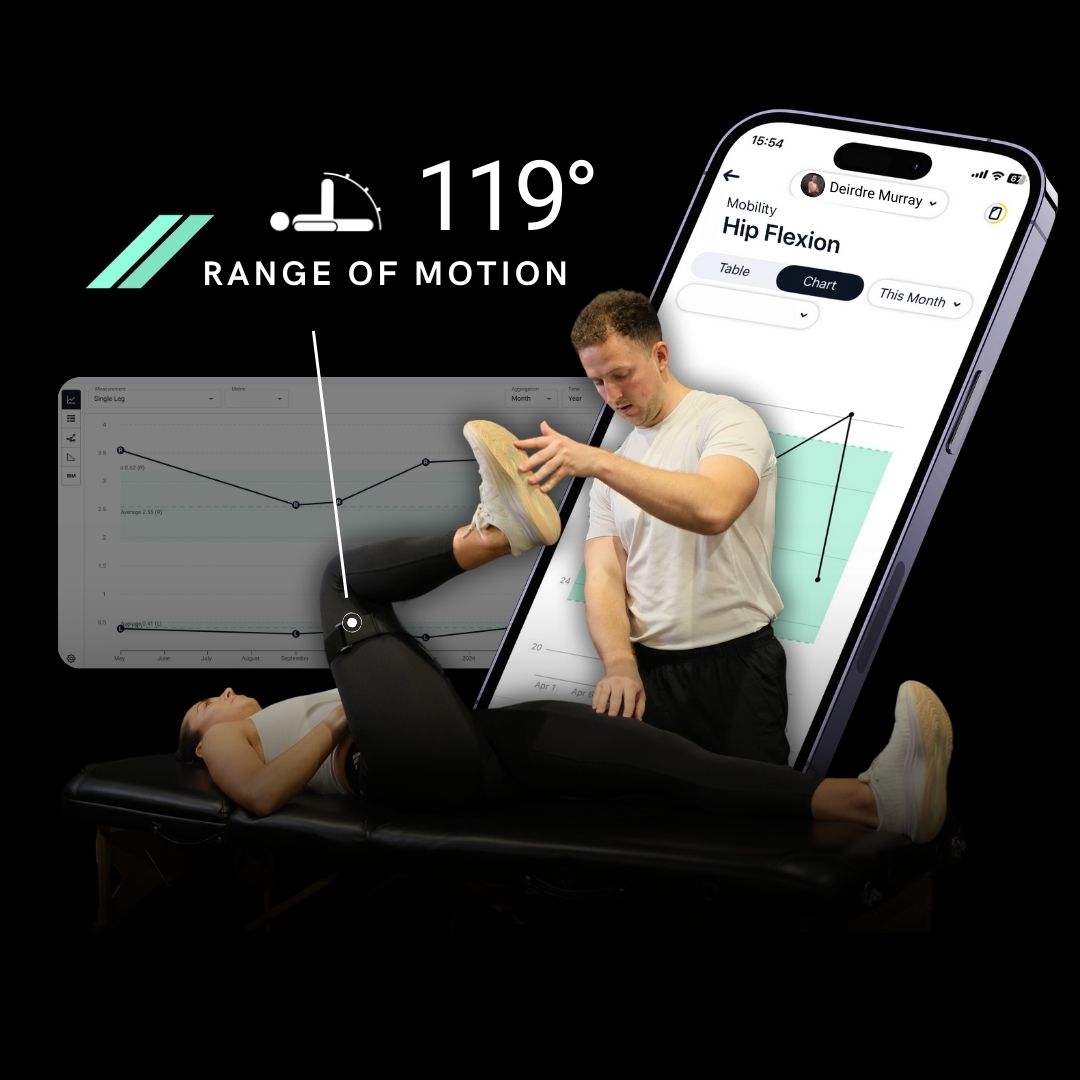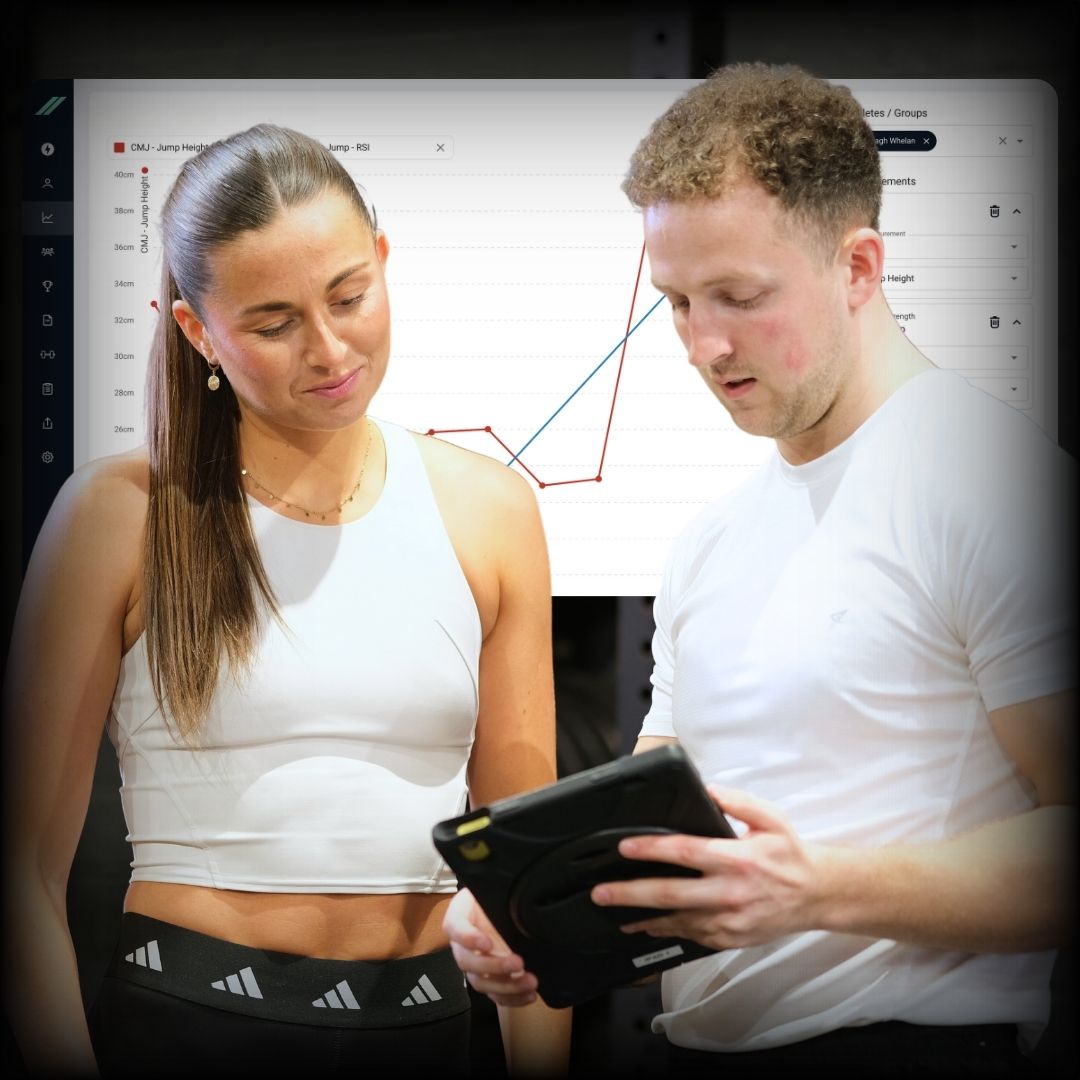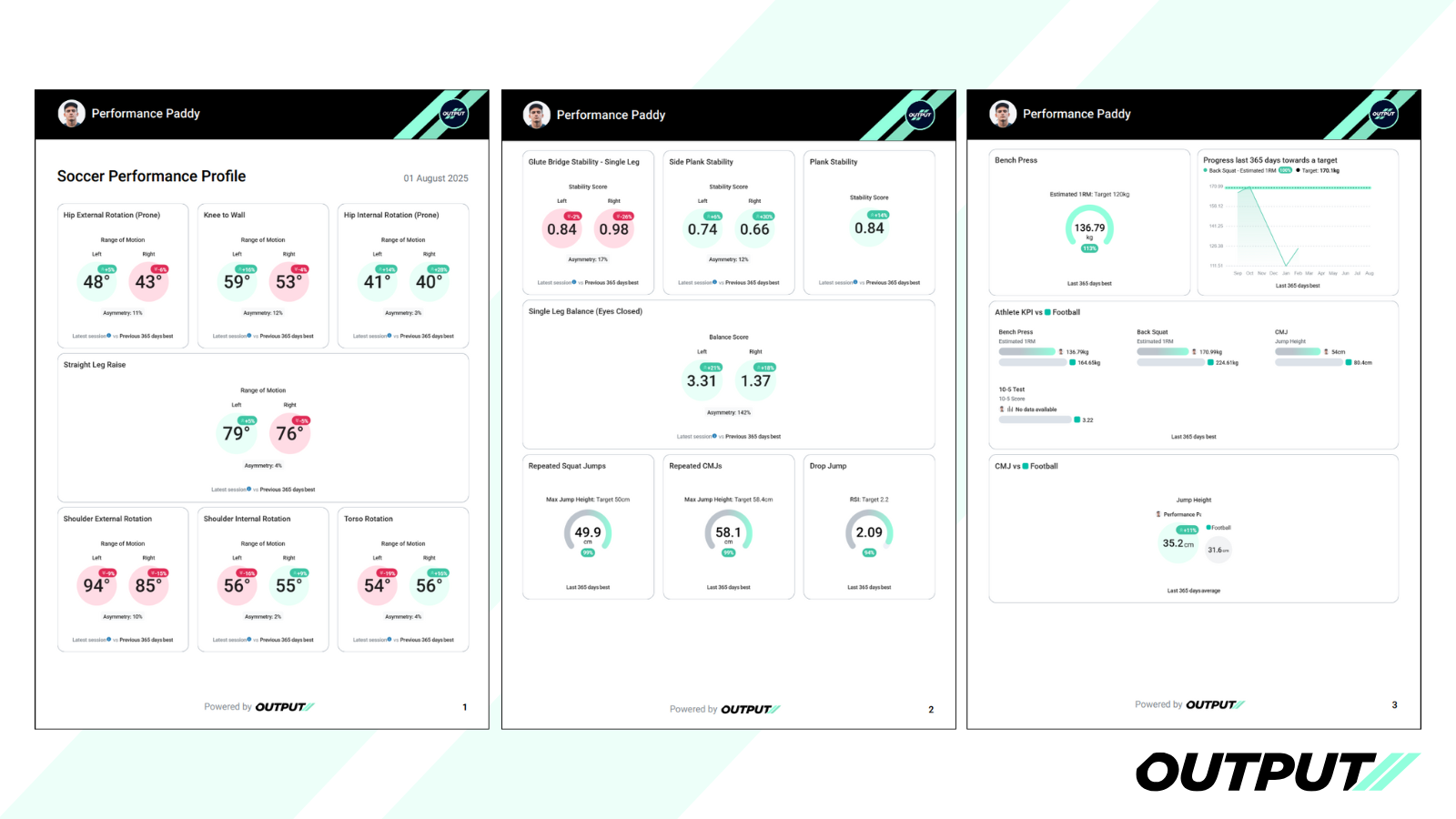BE THE FIRST TO GET PRODUCT UPDATES
Get notified about new features & special offers......
Thanks to Output Sports' versatility, the options for profiling your athletes are nearly endless. In this piece, we’ll walk you through a profiling battery commonly used with soccer players, along with the rationale behind each component. You can either implement this framework directly or adapt it to suit your specific needs.
There are three key aspects to performance profiling:
With this structure in place, we must also consider the unique demands of the game, common injury mechanisms, and the overlap between injury prevention and performance enhancement.
Time constraints are a reality for most practitioners. While conducting 200+ assessments might yield insights, it’s rarely practical. That’s why we’ve selected the most relevant metrics based on expert opinion and the most frequently used tests among Output Sports users.
Note: Player profiles may vary by position. For example, goalkeepers will require different assessments compared to outfield players. Injury history may also warrant additional screening. For the sake of this post, we’re focusing on a healthy outfield player with no pre-existing injuries.

Mobility is often an overlooked physical quality, partly due to the historical difficulty of obtaining objective data. With Output, collecting accurate mobility data is now fast and easy, you can read more about how to do it here. We recommend assessing from distal to proximal (bottom to top) to maintain consistency in your testing flow.

Now that you’ve identified any mobility limitations, it’s time to assess the athlete's strength, power, and speed through these ranges.

This section aims to answer a fundamental question:
Does the player have the strength, power, and capacity to tolerate training loads and excel in their sport?
To answer this, we assess their ability to:
These qualities underpin the explosive actions required in soccer—sprinting, jumping, changing direction, striking the ball, and reacting quickly under pressure.
When conducting these assessments, start with low-fatigue, high-speed tests, and finish with more strength-dominant or fatiguing efforts. This ensures you collect clean, representative data and avoid false deficits due to accumulated fatigue.
Gym Based Assessments

Field Based Assessments

This test battery provides a clear picture of the athlete’s strength and power capabilities. It highlights key areas for development based on normative comparisons, either self-collected or drawn from Output’s growing user database.
Depending on your facility, field-based assessments may need to be performed in a separate session. That’s why they’ve been listed last. If you do have turf access and plan to collect all data in one go, we recommend reordering the tests to prioritise high-velocity, low-fatigue efforts first. This ensures you're capturing true explosive outputs without the confounding effects of fatigue.

Finally, we need to assess whether the athlete can repeat high-intensity actions across an entire match. Soccer isn't just about being fast, strong, or agile—it's about doing those things again and again, with minimal drop-off, for 90+ minutes.
While the game is characterised by short, sharp bursts of effort, aerobic capacity underpins recovery between those efforts. One of the most practical and revealing ways to assess this is via a time trial.
Test to complete
Rationale

Understanding “Inputs”
In the tables, you may have noticed some measures labelled “via input.” While Output doesn't directly measure these variables, you can create a custom exercise and still use Output to record and track them. This allows you to consolidate all your performance data in one place rather than across multiple systems.
Pulling It All Together with Custom Dashboards

One of the major strengths of using Output Sports is its ability to integrate everything into a single view. You can assess, log, and display all your profiling data—mobility, strength, power, speed, and endurance—in one centralised dashboard. You can read more about dashboards here. These dashboards make it easy to track progress over time, compare players to baselines or positional norms, and adjust programming based on real-time needs. They help translate testing into training, keeping athletes engaged and sessions focused.
Whether you're screening players in preseason, monitoring adaptations mid-season, or managing return-to-play plans, Output makes profiling efficient, consistent, and meaningful. Profiling becomes part of the process, helping you make better decisions and develop athletes with greater precision.